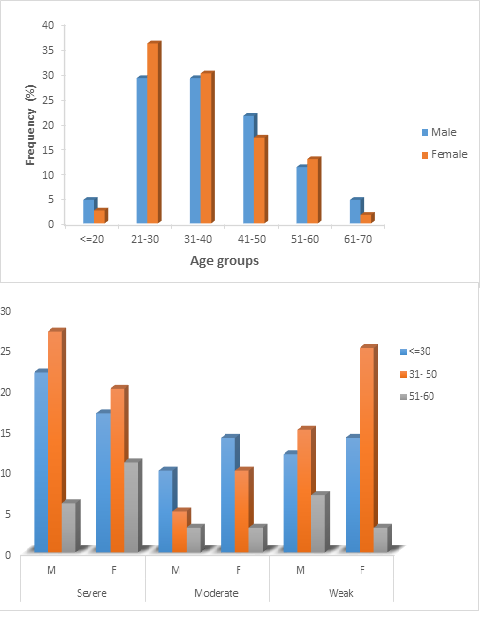Age-wise and Gender-wise Prevalence of Hepatitis B Virus (HBV) Infection in Lahore, Pakistan
Abstract
 Abstract Views: 412
Abstract Views: 412
Background
The prevalence of hepatitis B virus (HBV) in the Pakistani population has been reported previously, however, studies with a city-oriented approach and focus on age and gender distribution are very limited. Therefore, the current study was designed to unravel the age-wise and gender wise prevalence of HBV in Lahore, Pakistan.
Methods
A total of 350 blood samples of both male and female patients who visited National Genetic Laboratory, Lahore between February 2019 and July 2019 and who were suspected of HBV infection were screened. Sandwich based ELISA was used to detect rapid hepatitis B surface antigen (HbsAg) according to the manufacturer’s instruction. Real time PCR was used to detect HBV using HBV Rotor Gene PCR kit.
Results
Out of 350 blood samples screened for HBV infection (n= 350), 180 (51.43%) were of males and 170 (48.57%) were of females. Mean age (years) with SD (standard deviation) of the screened population was 37.22 ± 12.16 years. Overall, 224 samples (64%) were found to be positive for HBV infection. In our study, the number of females with this infection (52.24%) was slightly higher than males (47.76%). However, we observed no statistically significant difference (p = 0.225) between them.
Conclusion
Our study concludes that HBV is highly prevalent in Lahore, Pakistan. Females are slightly more susceptible to HBV infection as compared to males. This study also reports that HBV is more prevalent in the 20-40 age group.
Downloads

Copyright (c) 2019 Aqib Nazeer, Shahid Ali, Imran Tipu

This work is licensed under a Creative Commons Attribution 4.0 International License.
BSR follows an open-access publishing policy and full text of all published articles is available free, immediately upon publication of an issue. The journal’s contents are published and distributed under the terms of the Creative Commons Attribution 4.0 International (CC-BY 4.0) license. Thus, the work submitted to the journal implies that it is original, unpublished work of the authors (neither published previously nor accepted/under consideration for publication elsewhere). On acceptance of a manuscript for publication, a corresponding author on the behalf of all co-authors of the manuscript will sign and submit a completed the Copyright and Author Consent Form.









